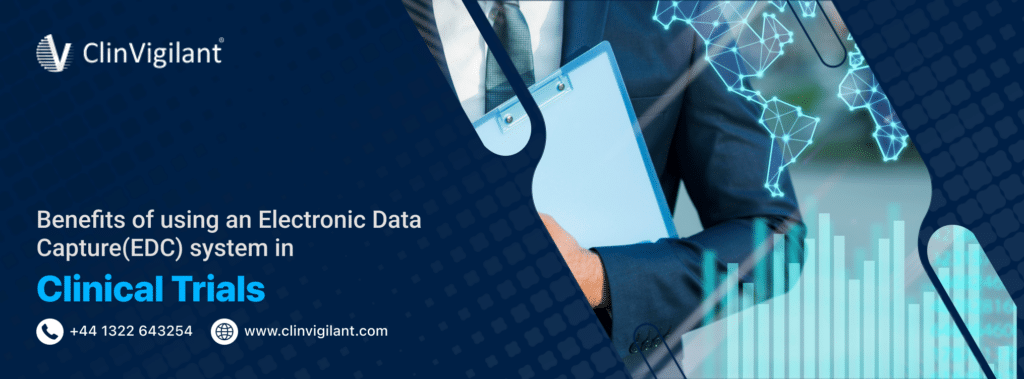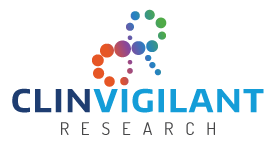
Clinical trials play a crucial role in bringing new drugs and medical devices to market. Researchers rely on clinical trials to determine the safety and efficacy of new medical interventions in volunteer study participants. The data collected during clinical trials guides regulatory bodies on whether to approve these interventions for public use.
Traditionally, clinical trials involved collecting data on paper case report forms (CRFs) which were then manually entered into a database for analysis. However, the past two decades have seen a major shift towards electronic data capture (EDC) systems for clinical trials. EDC refers to the process of collecting clinical trial data electronically rather than on paper. Researchers use EDC software or systems to design electronic case report forms (eCRFs), collect data from study sites, manage and monitor data, and analyze results.
The use of EDC in clinical trials delivers considerable advantages compared to traditional paper-based data collection. This article explores the key benefits of EDC for clinical trials.
Improved Data Quality
One of the most significant advantages of EDC is improved data quality. Paper CRFs often suffer from errors, omissions, and inconsistencies that get introduced during form completion and data transcription. In contrast, EDC in clinical research systems have real-time data validation checks and rules to identify these issues as soon as data is entered.
EDC systems can detect invalid or illogical entries during data capture. They prompt site staff to confirm or correct values on the spot, reducing queries. Best EDC software in clinical research can even pre-populate certain fields or pull data from connected systems to minimize manual entry. Together, these features enhance data accuracy and completeness.
Centralized Data
EDC allows clinical trial data to be captured and stored centrally in a consistent format. Paper records only exist as scattered copies with no central version of the truth. In multi-site trials, paper CRF pages would have to be physically transported to a central location for data entry and archiving. This fragmentation poses huge version control, storage, and data tracing issues.
In comparison, EDC offers unified data across all investigational sites in one accessible electronic system following standardized collection methods. Researchers can instantly check data from any site and access full audit trails showing the complete history of every data item. Centralized data also streamlines creating integrated data sets for interim and final analyses.
Faster Access to Clean Data
The superior data quality and unified data access that EDC provides translates into getting clean data faster for review and analysis. Researchers often have to wait several weeks or months after the last patient visit to receive complete paper records. Accurate data would only be available after comprehensive data entry, cleaning, and validation on paper forms collected from multiple sites.
EDC avoids lengthy manual processes that delay data availability. Electronic forms have automated validation checks during capture to improve accuracy upfront. Data managers also periodically monitor incoming data and get real-time statistics to identify any emerging issues across sites. This combination of proactive data checks and centralized data enables faster availability of high-quality, analysis-ready data from EDC systems.
Cost and Resource Savings
Although implementing an EDC system requires considerable upfront investment, it generates remarkable long-term cost efficiencies compared to paper data collection. A major area of savings is avoiding the expenses around paper CRF printing, shipment, storage, retrieval, and data entry over the course of a multi-year trial. EDC also reduces the need for traveling monitors to check records on-site when all the data exists centrally online.
Switching to EDC also yields significant time savings that translate into resource efficiencies. Automatic validation checks alleviate the burden of manual data cleaning and querying required for paper records. Personnel also save time by not having to physically track down or collate paper forms for review. Together, these savings on printing, shipping, storage, data entry, cleaning, and monitoring enables studies to reap considerable cost benefits from EDC adoption.
Enhanced Oversight and Communication
EDC systems contain various tools and analytics dashboards that strengthen trial oversight as well as collaboration. Features like annotated audit trails and data discrepancy logs help managers identify potential data issues or protocol deviations for each site. Analytics charts also allow easy visualization of enrollment metrics, data entry progress, query status, and more to pinpoint lags.
Many EDC platforms also facilitate seamless communication between data managers, monitors, and site staff. These include query resolution workflows, document sharing, template messaging, and training materials. With all stakeholders able to discuss issues and access resources within the system, EDC fosters a more connected, transparent view of trial progress.
Future-Ready for Emerging Data Sources
Today’s clinical trials are starting to leverage cutting-edge data capturing approaches alongside EDC like eCOA, wearables, sensors, and apps. Although adoption is still early, EDC systems that integrate nicely with these electronic clinical outcome assessments (eCOA) and connected devices hold the most promise for future-ready trials.
For instance, many modern Eclinical solution in clinical trials already seamlessly work with ePRO iPad apps, IoT biomarkers, and similar digital data streams. This means researchers can augment traditional eCRF data with patient-centric outcomes or continuous home measurements captured electronically via integrated tools. As clinical trials get more sophisticated, having flexible, interoperable EDC systems prepares them to harness technology-driven approaches.
Conclusion
Switching from paper to EDC brings game-changing improvements in data quality, efficiency, oversight, and technology readiness for clinical trials. EDC adoption continues rising, with over 90% industry-wide usage today, indicating the vast benefits sponsors and research teams gain. With biopharmaceutical R&D accelerating, having scalable, intelligent systems for end-to-end data capture and management is vital to achieving precision medicine goals. The superior analytics, integration, and oversight EDC facilitates helps drive more successful trial outcomes in the data age.
FAQs
What types of validation checks are used in EDC to improve data quality?
EDC systems can perform various real-time checks on entered data to catch potential issues early including protocol compliance checks, range checks, logical consistency checks, cross-field validation, mandatory field checks, and more. These automated verifications reduce reliance on manual processes to ensure quality.
Does EDC software also provide data extraction and analytics capabilities?
Yes, EDC systems have built-in reporting tools to generate data listings, summary statistics, and data visualizations without needing separate analytics software. Users can filter, breakdown, compare, and export clean, consistent data from the central database quickly for interim or final analyses.
Can EDC systems integrate with existing clinical trial platforms like CTMS and eTMF?
Leading EDC solutions have open APIs and built-in connectors that allow bi-directional data exchange with complementary trial systems like clinical trial management systems (CTMS), electronic trial master file (eTMF) documents, pharmacovigilance databases, and eClinical systems. This interoperability streamlines end-to-end workflows.
How does EDC improve collaboration between different study team members?
EDC facilitates unified communication within the system through features like assignable query workflows, annotated audit trails, template status alerts, chat functionalities, as well as role-based access and permissions for different user groups. Together, these help sponsors, CROs, investigators, and monitors collaborate easily.

